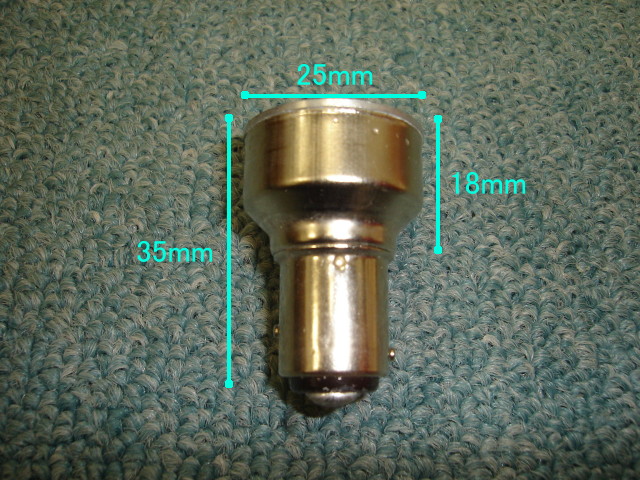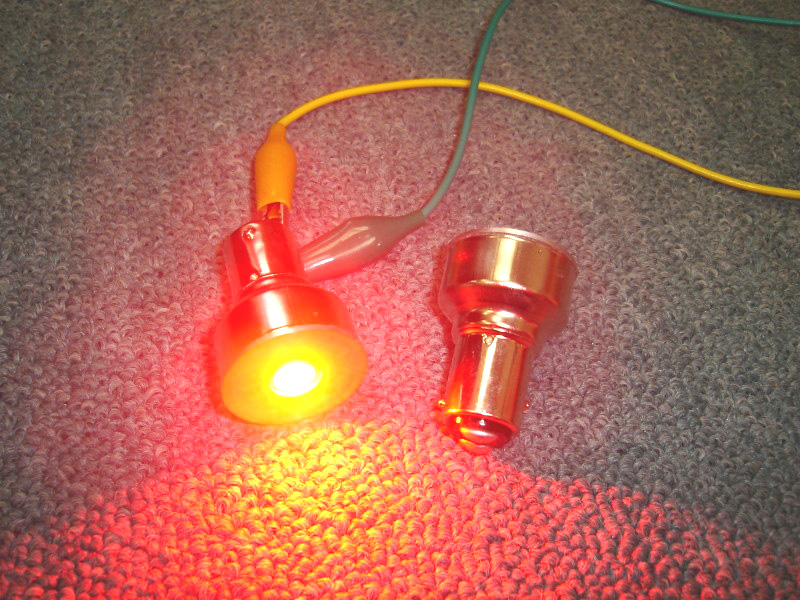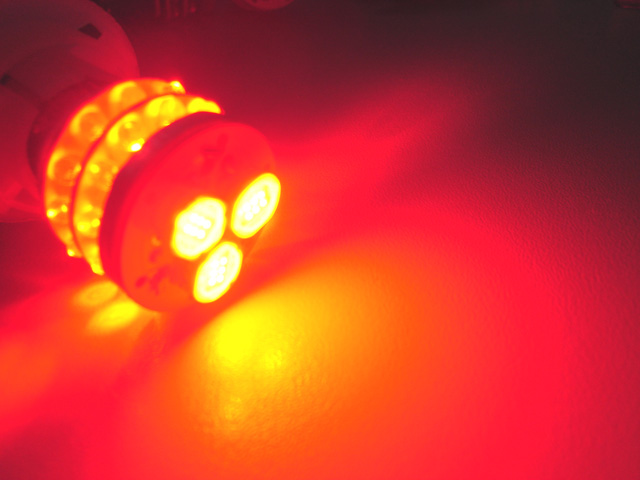

Mike

As title - anyone tried the new LED bulbs? Ive got landrover style backlights and just seen you can get replacement LED bulbs for them. Various no.'s of LED's inc a new 360deg LED type. Look good but was wondering if they are effective / any brighter than std filament?
I think they're good enough for use - but beware the SVA man, as a lot of them are marked 'Not For Road Use'
We don't fear the SVA man!

Mike
I fear no man, but I am wary of all!
Ive used them on my bikes in the past found them to be brill,nice and bright,last forever 
The search button is your friend 
http://www.locostbuilders.co.uk/viewthread.php?tid=50938
They have to abide by the same rules as the rest of us.
I like the busses round here because their indictors are in the shape of an arrow and set within the brake light.
Next time a bus gets stuck under a bridge or brakes down out comes the screwdriver set and balaclava....
It is worth mentioning that the buses use purpose built led units which would probably pass SVA but Darren is asking about replacement bulbs which are a different matter.
If it's inside the Landrover light unit and it shines I can't see why it should be a problem, they didn't take any of the covers off my lights to check I had real bulbs in.
Bought som of the halfords LED bulbs last night. I have to say they are crap at best. No real distinction between side and brake brightness. Dnt fit too wll (pins seem too short). Will be taking them back. Might have to consider new proper led lights some time in the future.
Most of the led replacement bulbs are practically invisible in daylight unless you are directly behind them - 30 degrees is the average spread of the
light.
The later 'Flux' variety are much better but harder to find. They are a surface mounted component so require much more than a soldering iron
to make.
Have a look for warden_jp2002 in eBay as he sells the good ones - don't even think about using the lesser ones as they are positively
dangerous.
These ones look good although I havent tried them yet

Looks like a wide angle too.

[Edited on 23-9-06 by RazMan]
I keep buying these and trying them. Yes you are right, other than reversing lights they are all marked "Not Road Legal" or "For Off
Road Use Only".
Reverse lights do not have a legal level of illumination.
All of those we have checked behind a difusing lens are way, way dimmer than normal bulbs.
Our "UltraBright" LED lights are 95 mm diameter and are packed with LED lights to get through the "E" mark testing.
I can't see how, with current technology a bulb replacement can have the same light out-put.
Perhaps in a few years time.
Steve @ sVc
Out of interest I have just ordered a couple of these new Luxeon types from Hong Kong. They are rated at 1W power which is incredible for an led. I
will make a direct comparison to the multi led types and post my results on here.
There is a big market for replacement bulbs as they offer a very long life and extremely small power consumption compared to filament bulbs - ideal
for kit cars running bike alternators.
It is worth mentioning that when you use an led behind a lense, make sure you have the same colour led (ie. red led for red lense) as the white led
light is severely filtered through a coloured lense.
[Edited on 26-9-06 by RazMan]
i tried red LED bulbs from Halfords to go behind red lens'. The main issue is the pins are short meaning they dont fit the holders too well.
Intermittent on side lights and sometimes dont illuminate at all on brake. On top of that the intensity is a bit low.
Bulbs work fine off a test meter but not good in the units. Intensity difference between side and brake isnt very distinct.
Be aware of fires!
 I hear that trucks and buses that have LED lights need to have regulator thats on a heat sink because consistently on they over
heat the wires.
I hear that trucks and buses that have LED lights need to have regulator thats on a heat sink because consistently on they over
heat the wires.
Especially relevant in a glass fibre car!


Eh? Why would something that consumes 10% of the power cause anything to overheat?
Probably thinking about the resistor you need on LED indicators to make them flash at the correct rate using conventional bi-metalic strip flasher modules.
I received the samples from Hong Kong and have had a closer look at them today.
First impression is that they very well made with a purpose built aluminium casing, presumeably making them more damp proof and less prone to physical
damage.
I used a BMW Mini indicator / parking light housing for my tests (which is what my project car uses). I inserted a Luxion ‘bulb’ into both sockets to
get the maximum effect.
The new Luxion units give an incredibly bright beam (for an led anyway) which has a good 130 degree field of view but once again the lack of
‘backward’ light prevents the reflector from doing its job. As a result the lense of the light unit has an intense 20p sized dot of light directly in
front of the ‘bulb’ and very little else. Maybe some kind of refracting cover which can point some of the light back would improve this issue but I am
left feeling a bit disappointed once again. In my opinion the multi Luxeon version (which throws light in a 360 degree arc) produces a better light,
utilising at least some of the reflector of the light unit. This new design is more suited to flashlight applications which require as much ‘forward’
light as possible, maybe even negating the need for a reflector at all.
Ah well, back to the old technology for a while longer.
The indicator resistors should be on a heat sink and should be fitted away from other wires. They do get hot, but only when the indicators have been
on for a very long time - say when hazard lights are on.
Otherwise there should be less load on the switches and wiring resulting no heat build-up.
Regards
Steve @ sVc
Ideally, when you retro-fit led bulbs you should also replace the old school flasher relay for the electronic variety. That way you can take advantage of the low power consumption and avoid the heat problem.
Just reviving this thread to point out that there is now a new model of LED 'bulb' available. It combines 3W Luxeon and side pointing
conventional leds. This might be even better than the 3W versions which I have installed - I am waiting for some samples from the supplier to see how
effective they are.
eBay Link

[Edited on 23-1-07 by RazMan]
For the record under the road traffic acts reverse lamps do have a maximum wattage --- istr 2 lamps only at 21 watts each.
This is to prevent idiots fitting KC hi-lighters as reverse lamps and using them to dazzle drivers following.
I compared my Luxeon 'bulbs' with the conventional filament bulb and both are around the same brightness but the led is more of a blue/white
light - the filament bulb actually looks yellow by comparison.
Not sure how you can determine wattage though and I suspect the regulation you mention refers to brightness more than wattage and I suppose
terminology is a grey area here - the Luxeon is only 3 watts (power consumption) but is certainly a good equivalent in light output.